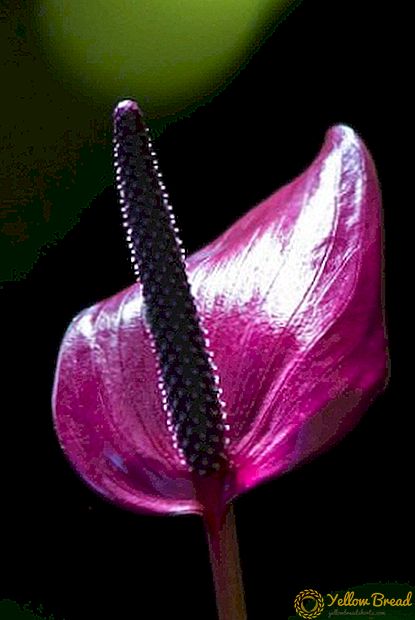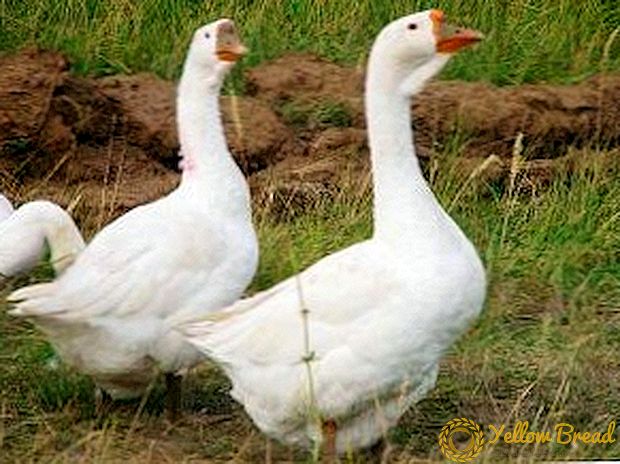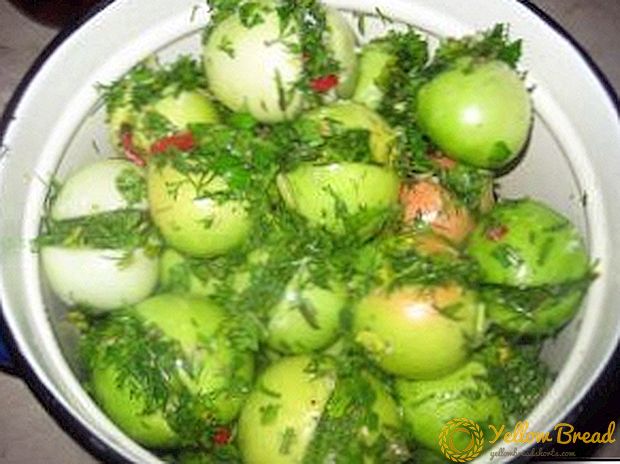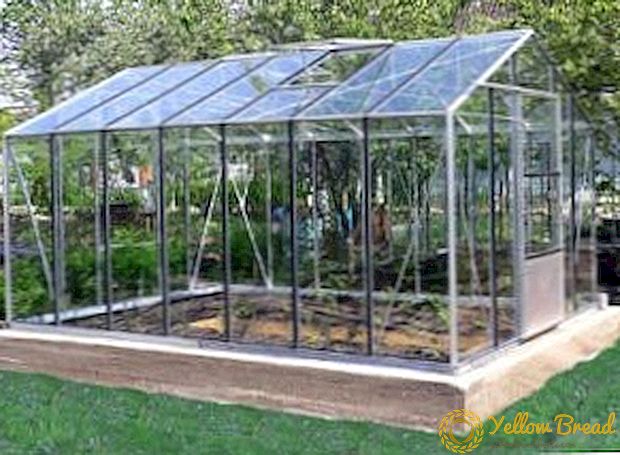 Every gardener who grows fruit and fruit trees knows that it’s not easy to grow healthy sweet cherries on your plot. There are many varieties of sweet cherries, but all of them are prone to disease, as well as to damage by pests that must be constantly fought.
Every gardener who grows fruit and fruit trees knows that it’s not easy to grow healthy sweet cherries on your plot. There are many varieties of sweet cherries, but all of them are prone to disease, as well as to damage by pests that must be constantly fought.
Cherry pests affect the tree completely: from the root system to the fruit. Loss of garden yield due to pests, on average, reaches 30%, and during insect reproduction - 70%. Productivity and getting a good harvest is impossible without protecting trees from harmful insects and organisms.
- Hawthorn
- Cherry weevil
- Zlatoguzka
- Winter moth
- Ringed silkworm
- Fruit mites
- Chafer
- Cherry slimy sawfly
- Cherry shoots moth
- Fruit Moth
- Cherry fly
- Cherry Aphid
- Birds
- Preventive measures against pests
There are several reasons why cherries are so susceptible to diseases and pest attacks. The most common - these are improper planting and care, inappropriate weather conditions and transmission of infection from neighboring fruit trees.
Cherry variety also plays an important role in the viability of the tree.When purchasing seedlings, pay attention to varieties resistant to pests adapted to your conditions, bred by breeders.
In any case, no matter what variety you choose, it is very important to be able to identify specific pests in a timely manner and to know how and better than to treat the sweet cherry for effective control of them.
Hawthorn
 Large white butterfly with dark streaks on wings - haws, by itself, does not harm the garden. However, one individual of such a butterfly can lay up to 500 yellow or orange eggs, which after a couple of weeks will turn into gray-brown or yellow-brown caterpillars.
Large white butterfly with dark streaks on wings - haws, by itself, does not harm the garden. However, one individual of such a butterfly can lay up to 500 yellow or orange eggs, which after a couple of weeks will turn into gray-brown or yellow-brown caterpillars.
These are the main pests of the cherry orchard, they devour the leaves of the cherry and other fruit trees and shrubs. Closer to winter, the larvae of the hawthorn are woven into cocoons and remain to hibernate in the leaves.
 To avoid unwanted crop loss, start spraying cherries from pests in spring, in late March - early April. To destroy all the surviving cocoons, spray the tree and the soil around urea solution. You will need 700 grams of urea per 10 liters of water.
To avoid unwanted crop loss, start spraying cherries from pests in spring, in late March - early April. To destroy all the surviving cocoons, spray the tree and the soil around urea solution. You will need 700 grams of urea per 10 liters of water.
Also, to fight against the hawthorn, it is necessary to collect its nests and equip the titmouse in the gardens, since only the tits eat these caterpillars.
Cherry weevil
 The widespread cause of the death of a tree is cherry weevil on sweet cherry Also called cherry pipe driver, which devours buds, foliage, buds, and uses fruit for laying eggs.
The widespread cause of the death of a tree is cherry weevil on sweet cherry Also called cherry pipe driver, which devours buds, foliage, buds, and uses fruit for laying eggs.
To effectively fight with it, you need to clean the trunks and branches of the old bark from autumn, to clean the cleaned parts of the tree with lime, and to burn the bark waste and fallen leaves.
The main place for the wintering of most pests, including weevils, is basal soil that needs to be dug up. During the swelling of the buds in spring, most of the weevils can be shaken off on a sheet spread under a tree.
For spraying well established drugs "Karbofos", "Rovikurt", "Inta-Vir", the dosage for an adult tree is about 3-4 liters.
In addition to drugs, there are popular folk remedies to combat weevil, for example, spraying infusion of chamomile ordinary. Take about 200 flowers, fill with 15 liters of water and let stand for a day.Then strain and add to it about 60 g of soap.
Zlatoguzka
 Zlatoguzka (golden silkworm, zolotuchka) - white butterfly-volnyanka with golden fluffy belly. The pest of fruit trees at the caterpillar stage, infects the leaves until the branches are completely exposed.
Zlatoguzka (golden silkworm, zolotuchka) - white butterfly-volnyanka with golden fluffy belly. The pest of fruit trees at the caterpillar stage, infects the leaves until the branches are completely exposed.
The caterpillars of the gold-wrecker eat the leaves to the veins and attach them to the branches with a thick layer of cobwebs, forming a nest in which they hibernate. As soon as the buds begin to bloom, the caterpillars emerge from the nests and devour the leaves. Over the season, this pest is able to destroy up to 25% of healthy leaves.
There are mechanical methods for the destruction of gold and gold and chemical. First consist in removing and destroying wintering nests from trees. The use of light traps and pheromone traps is also effective.
Among chemical methods, the most effective is spraying before flowering insecticides "Karbofos" (10%), "Benzophosphate" (10%) or "Antiline" (5 liters of water 25 g), Lepodotsid (20-30 g per 5 liters of water). Before blooming buds, cherries can be sprayed with Nitrafen and Olekupri.
Winter moth
 Moths - family of moths, numbering more than 50 species. Of these, the winter moth is the most dangerous for the sweet cherry.
Moths - family of moths, numbering more than 50 species. Of these, the winter moth is the most dangerous for the sweet cherry.
This pest infects trees in the fall, in late September - early October. Strengthens the leaves with cobwebs and lays eggs there, subsequently these leaves eat the caterpillars. Also caterpillars feed on buds, young leaves, flower buds.
To combat peppered moth need early fall carry out tillage between rows and dig around near-trunk circles, which reduces the number of pupae. Of the chemical agents, 10% "Benzophosphate" (60 g per 10 l of water), 10% "Karbofos" (80-90 g per 10 l of water), 80% "Chlorophos" (20-30 g per 10 liters of water).
It is necessary to spray before the buds are tied. Such insecticides also give a good effect - "Zolon", "Nexion".
Ringed silkworm
 Ringed silkworm - This is a moth, beige with a dark stripe on the front wings. Caterpillars of the silkworm about 6 cm, dark gray, covered with dark hair, damage the leaves of cherry and many other fruit trees. Easily carried by the wind.
Ringed silkworm - This is a moth, beige with a dark stripe on the front wings. Caterpillars of the silkworm about 6 cm, dark gray, covered with dark hair, damage the leaves of cherry and many other fruit trees. Easily carried by the wind.
Egg-laying is formed on thin branches of a tree in the form of girdling rings, and caterpillars hibernate in these masses. Before flowering out of eggs and devour young leaves and buds. They cause irreparable harm to the sweet cherry, because of which it cannot blossom and bear fruit for several seasons in a row.
To combat ringed silkworm you need to regularly inspect the tree and, if you find egg-laying, scrape them off and burn them. Also from the branches you need to remove the entire web, on which pests could remain. This should be done in overcast weather, then the caterpillars will not crawl out of the nest.
 In the spring, before flowering, sprayed with such insecticides, such as "Zolon", "Karbofos", "Metiation", "Metaphos", "Nexion", "Phosphamide", "Chlorophos", etc. "Nitrafen" and "Oleco-spur" will be suitable before bud break.
In the spring, before flowering, sprayed with such insecticides, such as "Zolon", "Karbofos", "Metiation", "Metaphos", "Nexion", "Phosphamide", "Chlorophos", etc. "Nitrafen" and "Oleco-spur" will be suitable before bud break.
Fruit mites
Brown or red fruit mite damages trees of all fruit trees, sucking sap from leaves and buds. The pest overwinters on the shoots and branches.
 The larvae appear from eggs in spring, damage the buds of trees, then feed on sap from the leaves. Damaged leaves become a dirty white color, stop growing and developing.At the same time, branches stop growing, yield decreases, and the frost resistance of the tree decreases.
The larvae appear from eggs in spring, damage the buds of trees, then feed on sap from the leaves. Damaged leaves become a dirty white color, stop growing and developing.At the same time, branches stop growing, yield decreases, and the frost resistance of the tree decreases.
Methods of struggle: in the fall or spring, before bud break, plants are treated with a 1-1.5% solution of the preparation DNOC (dinosal). After budding, before flowering and after, as well as in summer, trees are sprayed with Metaphos (0.3%) or Phosphamide (0.2%) emulsion.
Chafer
May beetles actively breed at the end of spring. Females lay eggs in the ground, near the roots of sweet cherry. Eggs turn into larvae that live in the soil for about 3-4 years, all the while feeding on the roots of the tree.
 There are several ways to combat this pest, the most laborious and least effective - mechanical collection of larvae. The safest and most effective method is land plot sulding.
There are several ways to combat this pest, the most laborious and least effective - mechanical collection of larvae. The safest and most effective method is land plot sulding.
The larvae do not tolerate nitrogen, so white clover is planted to control them near the cherries. Bacteria at its rhizome process nitrogen from the air and spread it to the roots of neighboring plants.
Chemicals - spraying with drugs "Aktophyt", "Bowerin", "Fitoverm".
It is also possible to minimize harm from the larvae of the May Beetle using onion decoction for watering the soil near the cherry tree. Two thirds of the water you need to take a third of onion peel and insist 7 days. The resulting solution must be diluted with water 1: 1 and water the base of the tree in the evenings.
Cherry slimy sawfly
 Adult individual of the black sawfly of black color, wings transparent, body length 4-6 mm. Damages cherry, sweet cherry, plum and other fruit plants. Its caterpillars eat the leaves before the veins. During the autumn digging of the soil of the near-stem circles, the larva larvae that have passed for wintering are partially destroyed.
Adult individual of the black sawfly of black color, wings transparent, body length 4-6 mm. Damages cherry, sweet cherry, plum and other fruit plants. Its caterpillars eat the leaves before the veins. During the autumn digging of the soil of the near-stem circles, the larva larvae that have passed for wintering are partially destroyed.
Mass emergence of larvae is observed after harvest, then you can apply spraying trees 10% Karbofos (75 g), 25% Rovikurt (10 g), Chlorophos (15-20 g per 10 l of water). After the harvest, you can spray the broths of insecticidal plants - chamomile, henbane black.
Cherry shoots moth
The most dangerous pest of sweet cherry is cherry moth. It is a tawny-colored insect with white spots and a dark transverse band. Caterpillars gnaw growing buds and flower buds, then damage young leaves. After these pests on the shoots remain lumps, like pieces of wool, with black spots - excrement.
 As a counter to the cherry moth in the middle of June, it is necessary to dig in near-trunk circles and carry spraying 10% Karbofos (75 g) and 10% Trichlormetaphos-3 (50-100 g per 10 l of water). Processed during bud break or bud formation. Preparations "Spark" (in mid-spring), "Kinmiks" (after flowering), 1 tablet in a bucket of water.
As a counter to the cherry moth in the middle of June, it is necessary to dig in near-trunk circles and carry spraying 10% Karbofos (75 g) and 10% Trichlormetaphos-3 (50-100 g per 10 l of water). Processed during bud break or bud formation. Preparations "Spark" (in mid-spring), "Kinmiks" (after flowering), 1 tablet in a bucket of water.
Another option - pour boiling water 2 cups of wood ash in a three-liter jar and insist day. Add soap shavings. Pour into a 10-liter bucket, mix, strain and add 40 ml of table vinegar. Immediately spray.
Fruit Moth
 Small butterfly, the caterpillars of which destroy the leaves, leaving only the bare branches of the tree. Before flowering, the caterpillars of the fruit moth are transferred to the surface of the leaves and feed on the outside, weaving around the food sites of the cobwebs in the web nests. Sometimes this pest can destroy almost the entire foliage of trees.
Small butterfly, the caterpillars of which destroy the leaves, leaving only the bare branches of the tree. Before flowering, the caterpillars of the fruit moth are transferred to the surface of the leaves and feed on the outside, weaving around the food sites of the cobwebs in the web nests. Sometimes this pest can destroy almost the entire foliage of trees.
After pupation, butterflies make egg-laying on the bark of the tree. Destruction methods fruit moths are digging near-stem circles and burning opal foliage. Chemicals - 10% Karbofos (75 g) and 10% Trichlormetaphos-3 (50-100 g per 10 liters of water).
Cherry fly
One of the most dangerous pests of cherries and cherries. Cherry fly on sweet cherry destroys up to 90% of fruits, and about 30% on cherries.
 Pupae hibernate in the soil at a depth of 2 to 5 cm. In May, after flowering, adult flies are born, 6 mm in size, black and brown in color on the wings. Eat pests juice unripe fruit. Cherry fly eggs lay near the stem, damaging the middle and late varieties.
Pupae hibernate in the soil at a depth of 2 to 5 cm. In May, after flowering, adult flies are born, 6 mm in size, black and brown in color on the wings. Eat pests juice unripe fruit. Cherry fly eggs lay near the stem, damaging the middle and late varieties.
Early varieties ripen before the flies come out and remain unharmed. From eggs in the fruit develops a larva that feeds on pulp. The damaged fruits darken, rot, separate from the stem and fall off.
To eliminate the cherry flyit is necessary to carry out deep plowing in the fall. Also needed spray trees 2 weeks after the start of departure and again 2 weeks after the first spraying.
Suitable: 50% "Karbofos" (1-3 kg / ha), 20% "Metaphos" (1.5-3 kg / ha), 80% "Chlorophos" (1.6-4, 5 kg / ha), preparations "Iskra", "Lightning" twice a season.The first time is at the end of April, the second - in 18-20 days. Then once a week you need to spray the soil around the tree with the same preparations.
Cherry Aphid
Cherry Aphid (Black Aphid) - a serious pest for cherries in the phase of the opening of the kidneys. A black-brown female 2-2.5 mm long lays eggs at the base of the kidneys, after which the larvae that eat the sap of the leaves emerge from them. After injuries the leaves stop growing, curl, blacken and dry.
 In case of mass flowering, black aphids reproduce, as a result of which it transfers to the fruits and stalks and contaminates them with sticky excrement and larval skins.
In case of mass flowering, black aphids reproduce, as a result of which it transfers to the fruits and stalks and contaminates them with sticky excrement and larval skins.
There are several tips on how to deal with black aphids on sweet cherries. Mechanical method is to remove the places of active settlement of cherry aphid - basal vegetation and shoots.
When mass reproduction is necessary in early spring, before the appearance of the kidneys, to spraying drugs "Aktelik", "Inta-vir", "Commander", "Fitoverm".
There are and popular sprinkling recipeswhich have proven their effectiveness: solution from household soap (half a piece of soap for 10 liters of water); another solution is insist the ash solution for three days (0.5 kg of ash per 5 liters of water). This method will not only help get rid of black aphids, but also serve as foliar feeding.
Birds
Protection from birds in the cherry is essential, despite the fact that they are often also assistants in the garden, eating many pests: caterpillars, beetles and larvae.
There are several effective methods that protect the crop from sparrows, starlings, thrushes and jays that harm the sweet cherry, pecking fruit to the bone. Of course, we are not talking about chemical methods, but only about mechanical ones, such as ultrasonic scarers, gas guns, nets, scarecrows, and others.
 Ultrasonic Repeller - a rather expensive tool that pays off if you grow a lot of fruit trees. The range of this device is about 90 square meters. m, while it is completely safe for humans.
Ultrasonic Repeller - a rather expensive tool that pays off if you grow a lot of fruit trees. The range of this device is about 90 square meters. m, while it is completely safe for humans.
Generating flashes of bright light or an alarm signal that birds emit when danger, this device provides reliable protection of the crop against feathered pests.
If there are not so many trees on your plot, you can use gas gun. This is a tank that is filled with propane and automatically shoots without human intervention. It simulates the sound of a shotgun rifle, such a cylinder is enough for 5,000 shots.
There are still special bird netsA small fishing net will also fit. In European countries, for example, gardeners are saving themselves from birds - they just throw nets on trees. However, this method is valid only for low, young trees.
You can also refer to classic ancient methods such as scarecrows and tinsel. As a tinsel, you can use light shiny and rustling objects - New Year's "rain", old CDs, colored cellophane, foil.
Experienced gardeners are advised to use blue objects for this, as birds are inexplicably afraid of this particular color.
There is also an option like Sweet cherry fruit processing with hot pepper solution. You need to take 10 pods of pepper, soak them for 3 days in a large jar of water and spray the top of the tree. Before use, the fruit sprayed with this solution just needs to be rinsed well with water.
Preventive measures against pests
 As you know, any disease is easier to prevent than to cure, so do not forget about the prevention of trees and the observance of agrotechnical measures in the care of cherries.
As you know, any disease is easier to prevent than to cure, so do not forget about the prevention of trees and the observance of agrotechnical measures in the care of cherries.
First of all, in the arrangement of the garden, choose the right place bookmarks. This should be a well-drained soil of suitable composition, in places far from wild plants.
When pruning branches affected by pests, always grab 10-15 cm of a healthy area., there may also be hiding larvae or spores.
Required timely collect and burn infected leaves, branches, shoots and fruits. It is necessary to burn all this far from a private garden site.
After harvesting in the fall, all fallen leaves must also be harvested and burned, since they usually overwinter the eggs of pests. Twice a year in spring and autumn you need to dig the soil around the tree and update the whitewashing of the trunk and large branches.
Despite the "tenderness" of the sweet cherry, you should not abandon the idea of planting this tasty berry on your plot. Knowing what birds and pests eat sweet cherries, as well as timely performing simple methods of dealing with them, you will be able to grow a bountiful harvest for many years.






